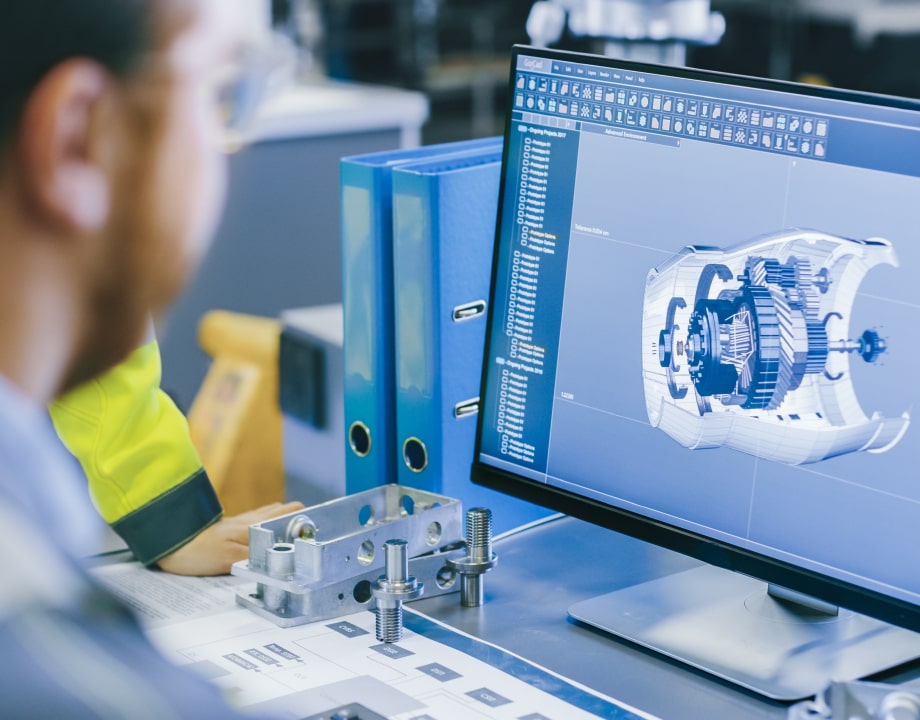How to Address the Skills Gap in Engineering
How to Address the Skills Gap in Engineering


An investment in learning and development can help to close the skills gap in your workforce.
It’s hard to have a conversation about the state of American industry—and engineering in particular—without the subject of the “skills gap” coming up. But talking about the gap is one thing, and searching for solutions is another.
ASME asked Kevin Perry, a veteran in the learning and development field, to explain the challenges this gap presents and how industry leaders and decision-makers can address it. Perry, who most recently spent more than 17 years as SAE International’s director of professional development, understands both the challenges and opportunities firsthand.
ASME: What is the skills gap in engineering? And is it a real problem?
Kevin Perry: A few years ago, SAE became very interested in workforce development because we were continually hearing from employers that they were having difficulty filling jobs, and it was particularly challenging with new hires. We commissioned a study which showed that new hires tend to be weak in three areas: hard skills, soft skills, and experience.
On the hard skills side, the weakness starts with engineering fundamentals—things that make up the engineer’s basic toolkit, like geometric dimensioning and tolerancing, finite element analysis, and so on. Beyond that, many come up short on a good, solid background in math and applied science, and even more so in their problem-solving capability. It turns out many young engineers can have strong theoretical backgrounds and yet be stymied when it comes to applying that knowledge to real-world problems.
The other hard skill that is often missing is a good background in mechanical systems and components. Firms that are hiring engineers expect them to have some background in the core systems they will be dealing with. In the auto industry, for example, that might include a basic understanding of the power train and chassis. Logic is another area where new hires tend to be weak. This is an especially important area for those interested in software engineering jobs, which recently have been the most difficult to fill in the auto industry.
ASME: How much of a concern is lack of hands-on experience?
Perry: There was a time when folks took things apart to see how they worked. Some of that was people working on their cars, for example, but a lot came from people growing up on farms who were accustomed to working on agricultural equipment. Today, that’s mostly gone. Young people now grow up in front of screens, and everything is simulated and part of a game. There are certain benefits to that, but the potential downside comes when they get into a real-world work setting and are faced with having to take a design or product-development role, working with systems and components they don't know anything about. So, the employer preference would be that—one way or another—engineers get some experience, whether it’s self-directed or orchestrated through things like design competitions.
ASME: Learning obviously takes place beyond college and later in a career, too—often offered by professional technical organizations. What do engineering firms—and engineers—look for in that regard?
Perry: Learning opportunities offered by professional technical organizations typically are formally structured, professionally run, and developed using acknowledged best practices for learning and development. Many engineering societies, like ASME, have their training organizations accredited by a third party such as the International Association for Continuing Education and Training (IACET), which has an established standard for how to effectively operate a credible training program.
Beyond that, most engineering societies leverage industry practitioners to design and deliver their training courses. The strength in this approach is that these are practicing engineers doing the same work the learners are doing, so they can completely relate to what their learners are experiencing.
Project management for technical professionals is one area where courses presented by technical societies have been helpful in filling the skills gap, for example.
Another area where technical societies play a key role is in educating engineers about standards development and application—a topic most employers would agree is very important for an engineer working in any industry. It’s important to understand what standards are, why they are important, how they are used, and how they are created and maintained. And who better to teach technical content that relates to standards than the organization that created the standard?
ASME: Are there specific steps engineering managers should take to proactively fill the skills gap in their own workforce?
Perry: One key is to first identify the performance metrics, skills gaps, or areas of improvement needed in your workforce. From there, you define your professional development goals and design targeted content that hits precisely on those requirements.
This basic approach can be used on any volume of content, whether the training is meant to integrate a small, technical change into the production process or to build an understanding of a broader topic, like industry codes and standards.
You can also look for custom content. When you turn to learning and development professionals, remember that many organizations that offer training have the ability customize that training to meet your specific needs.
Also, as you consider training for your workforce, realize that it can play a meaningful role in employee retention. At a fundamental level, engineers are no different from anybody else. As an employer, you want to treat them with respect and dignity. You want to give them interesting projects, and you want to be a good manager. Part of being a good manager is investing in your talent. So give them ongoing opportunities to train and develop, whether it’s formal training or more informal learning.
ASME asked Kevin Perry, a veteran in the learning and development field, to explain the challenges this gap presents and how industry leaders and decision-makers can address it. Perry, who most recently spent more than 17 years as SAE International’s director of professional development, understands both the challenges and opportunities firsthand.
ASME: What is the skills gap in engineering? And is it a real problem?
Kevin Perry: A few years ago, SAE became very interested in workforce development because we were continually hearing from employers that they were having difficulty filling jobs, and it was particularly challenging with new hires. We commissioned a study which showed that new hires tend to be weak in three areas: hard skills, soft skills, and experience.
On the hard skills side, the weakness starts with engineering fundamentals—things that make up the engineer’s basic toolkit, like geometric dimensioning and tolerancing, finite element analysis, and so on. Beyond that, many come up short on a good, solid background in math and applied science, and even more so in their problem-solving capability. It turns out many young engineers can have strong theoretical backgrounds and yet be stymied when it comes to applying that knowledge to real-world problems.
The other hard skill that is often missing is a good background in mechanical systems and components. Firms that are hiring engineers expect them to have some background in the core systems they will be dealing with. In the auto industry, for example, that might include a basic understanding of the power train and chassis. Logic is another area where new hires tend to be weak. This is an especially important area for those interested in software engineering jobs, which recently have been the most difficult to fill in the auto industry.
ASME: How much of a concern is lack of hands-on experience?
Perry: There was a time when folks took things apart to see how they worked. Some of that was people working on their cars, for example, but a lot came from people growing up on farms who were accustomed to working on agricultural equipment. Today, that’s mostly gone. Young people now grow up in front of screens, and everything is simulated and part of a game. There are certain benefits to that, but the potential downside comes when they get into a real-world work setting and are faced with having to take a design or product-development role, working with systems and components they don't know anything about. So, the employer preference would be that—one way or another—engineers get some experience, whether it’s self-directed or orchestrated through things like design competitions.
ASME: Learning obviously takes place beyond college and later in a career, too—often offered by professional technical organizations. What do engineering firms—and engineers—look for in that regard?
Perry: Learning opportunities offered by professional technical organizations typically are formally structured, professionally run, and developed using acknowledged best practices for learning and development. Many engineering societies, like ASME, have their training organizations accredited by a third party such as the International Association for Continuing Education and Training (IACET), which has an established standard for how to effectively operate a credible training program.
Beyond that, most engineering societies leverage industry practitioners to design and deliver their training courses. The strength in this approach is that these are practicing engineers doing the same work the learners are doing, so they can completely relate to what their learners are experiencing.
Project management for technical professionals is one area where courses presented by technical societies have been helpful in filling the skills gap, for example.
Another area where technical societies play a key role is in educating engineers about standards development and application—a topic most employers would agree is very important for an engineer working in any industry. It’s important to understand what standards are, why they are important, how they are used, and how they are created and maintained. And who better to teach technical content that relates to standards than the organization that created the standard?
ASME: Are there specific steps engineering managers should take to proactively fill the skills gap in their own workforce?
Perry: One key is to first identify the performance metrics, skills gaps, or areas of improvement needed in your workforce. From there, you define your professional development goals and design targeted content that hits precisely on those requirements.
This basic approach can be used on any volume of content, whether the training is meant to integrate a small, technical change into the production process or to build an understanding of a broader topic, like industry codes and standards.
You can also look for custom content. When you turn to learning and development professionals, remember that many organizations that offer training have the ability customize that training to meet your specific needs.
Also, as you consider training for your workforce, realize that it can play a meaningful role in employee retention. At a fundamental level, engineers are no different from anybody else. As an employer, you want to treat them with respect and dignity. You want to give them interesting projects, and you want to be a good manager. Part of being a good manager is investing in your talent. So give them ongoing opportunities to train and develop, whether it’s formal training or more informal learning.




.png?width=854&height=480&ext=.png)

